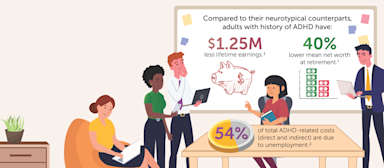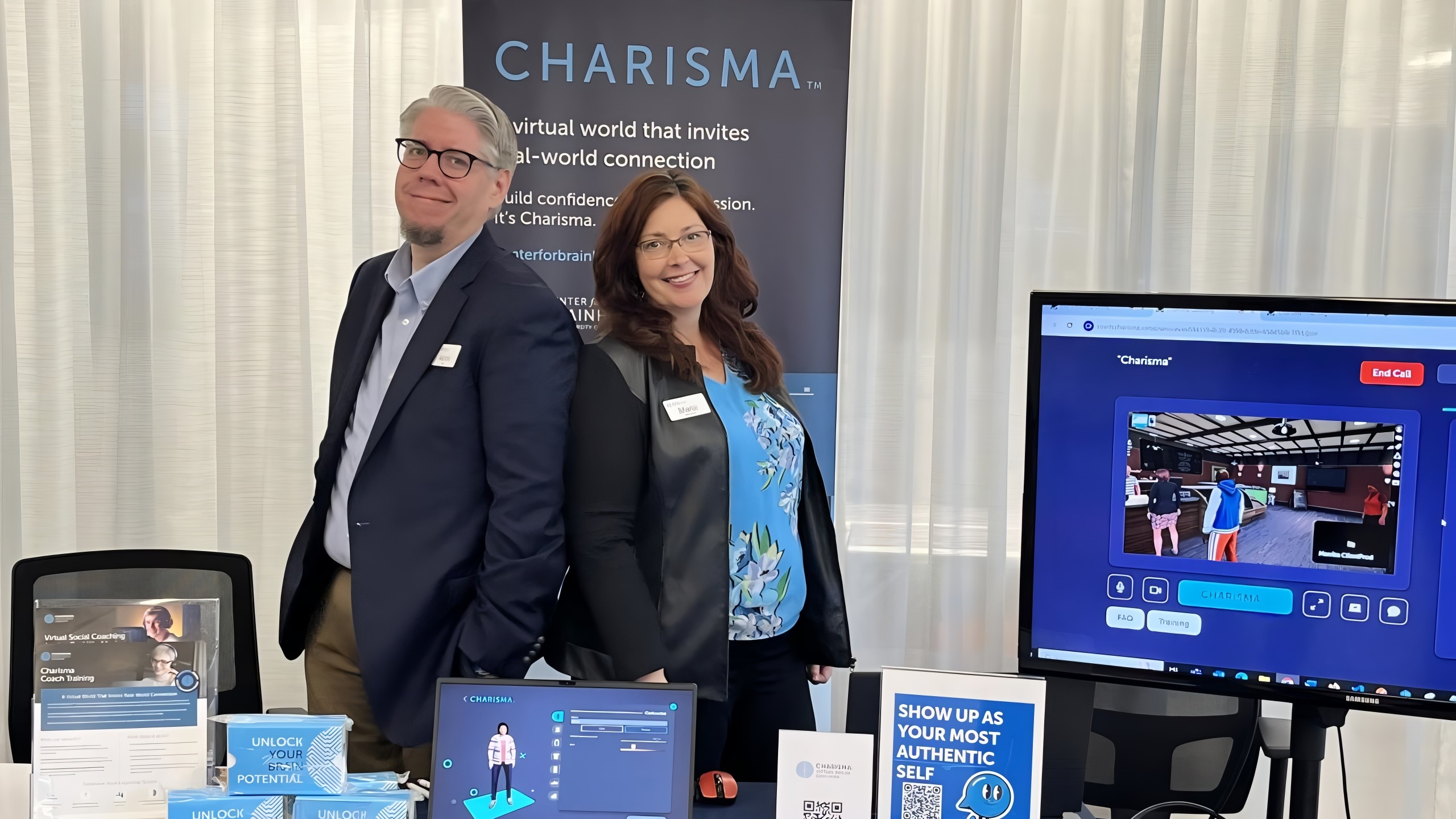Economics of ADHD
BRAINOMICS CASE STUDY
Open Printable PDFAttention deficit hyperactivity disorder (ADHD) is characterized as a neurodevelopmental condition associated with inattention, impulsivity and difficulty maintaining focus. In the U.S., 10.5% of children (6.5M) and 6% of adults (15.5M) have a current ADHD diagnosis.3,4 From a medical perspective, ADHD is also associated with considerable healthcare expenses, aggravated by higher likelihood of conditions such as anxiety and depression. Even if symptoms like hyperactivity and impulsivity lessen in adulthood, many individuals continue to experience deficits in areas like executive function and emotional regulation throughout life. Zooming out, the economic implications of ADHD are eye-opening, revealing a significant setback in the U.S. labor market. Research shows that adults who struggle with ADHD in childhood are more likely to experience economic drains in adulthood, especially higher healthcare costs, greater unemployment and diminished productivity.2 Even with occupational development, these individuals tend to earn less, save less and even have higher rates of incarceration. They are also more likely to be living at home or unemployed than their neurotypical peers. Estimates suggest a staggering $301 billion annual loss in income across the U.S. workforce as a consequence of ADHD — and that number likely just scratches the surface. Other hidden costs, such as road traffic accidents, substance-use disorders, caregiving costs, presenteeism and absenteeism, often remain unmeasured.1,2 But our outlook on the future is not all doom and gloom — social skills training provides hope. Charisma™ Virtual Social Coaching, a meticulously designed social skills training program developed at Center for BrainHealth, has proven a valuable and highly effective intervention for individuals with social challenges — including those with ADHD.6
Following Charisma Virtual Social Coaching, 90% of participants show increased skill in recognizing and managing emotions.5,6
Charisma empowers participants to leverage strengths — like creativity, spontaneity and high energy — in order to build critical social and emotional skills that enhance well-being … and by extension, economic opportunities. Through personalized, strengths-based virtual social coaching, users develop self-regulation strategies and effective communication tools that directly improve their employability and potential for workplace success. By fostering confidence in social interactions and emotional management, Charisma helps individuals with ADHD unlock their full potential and navigate professional environments and new challenges more effectively.By investing in interventions like Charisma that foster brain-healthy culture at home, at school and in the workplace, we generate economic opportunity. We unlock productivity and innovation. We build a path for growth and leadership. The Brainomics® team believes the economics of ADHD is not just about what we lose — it’s about the potential that can be tapped to create value and help people thrive.
“”
Learn more about Charisma Virtual Social Coaching.
1Schein J, et al. (2022). Economic Burden of Attention-Deficit/Hyperactivity Disorder Among Adults in the United States: A Societal Perspective. Journal Of Managed Care & Specialty Pharmacy.2Pelham W, et al. (2020). The Long-term Financial Outcome of Children Diagnosed With ADHD. Journal Of Consulting and Clinical Psychology.3Johnson M, et al. (2021). Improving Classroom Communication: The Effects of Virtual Social Training on Communication and Assertion Skills in Middle School Students. Frontiers in Education. 4Johnson M, et al. (2022). Charisma Virtual Social Training: A Digital Health Platform And Protocol. Frontiers in Virtual Reality. 5Danielson M, et al. (2024). ADHD Prevalence Among U.S. Children and Adolescents in 2022: Diagnosis, Severity, Co-Occurring Disorders, and Treatment. Journal Of Clinical Child and Adolescent Psychology.





